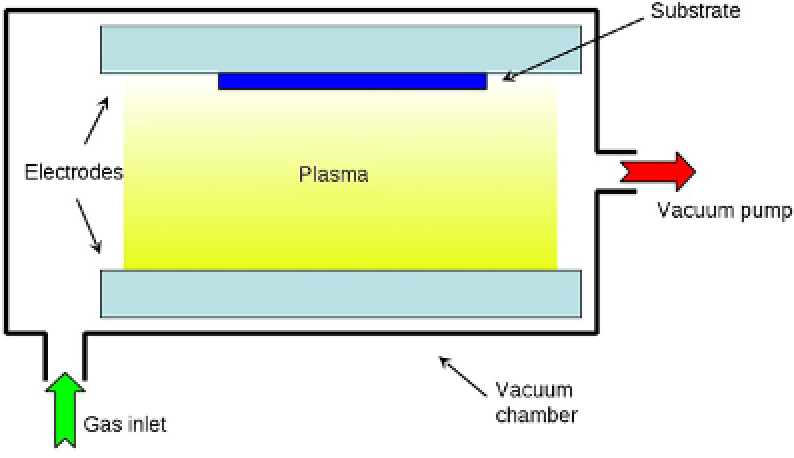Biomedical Engineering Reference
In-Depth Information
15.3 CHEMICAL VAPOR
DEPOSITION
products and transport of reaction products
away from the surface. The main CVD process
parameters--such as temperature, pressure,
reactant gas concentration, and total gas flow--
require accurate control and monitoring. The
chemical reactions include pyrolysis, oxidation,
reduction, hydrolysis, or a combination of these
and may be catalyzed by the substrate. The
actual chemical reactions determine the operating
temperature range.
CVD is a well-established technique for the
deposition of metallic, ceramic, and semicon-
ducting thin films because it offers the advan-
tages of a relatively simple apparatus, excellent
uniformity, high density, high deposition rate,
and amenability to large-scale production. CVD
is a more complex method of forming thin films
and coatings than PVD. CVD exhibits several
distinct advantages, such as the capability of pro-
ducing highly pure and dense films or fine par-
ticles at reasonably high deposition rates and the
capability of coating surfaces of complex shapes.
Many forms of CVD are in wide use and are
frequently referenced in the literature. These
processes differ in the means by which chemical
reactions are initiated (e.g., activation process)
and process conditions
[4]
. As such, atmos-
pheric-pressure CVD, low-pressure CVD, and
Chemical vapor deposition
(CVD) involves either the
dissociation of a gaseous chemical and/or chemi-
cal reactions between gaseous reactants when
heated, irradiated by photons, or subjected to a
plasma
[24]
. As a product, a thin film is deposited
on a surface. This technique is used to produce
very pure high-performance solid materials.
Depending on the activation sources for the
chemical reactions, the deposition process can
be categorized into thermally activated, laser-
assisted, or plasma-assisted CVD. The CVD pro-
cess occurs in a vacuum chamber, with pressures
ranging from the atmospheric pressure (atmos-
pheric-pressure CVD) to below 10
−
8
Torr (ultra-
high-vacuum CVD).
Figure 15.8
represents a
typical plasma-assisted CVD system.
The main steps that occur in a typical CVD
process can be summarized as follows
[14]
:
(1) transport of reacting gaseous species to the
surface of a substrate, (2) adsorption of the
species on that surface, (3) heterogeneous surface
reaction catalyzed by the surface of the substrate,
(4) surface diffusion of the species to growth
sites, (5) nucleation and growth of the film on the
substrate, and (6) desorption of gaseous reaction
FIGURE 15.8
Schematic of a plasma-assisted chemical vapor-deposition system.



